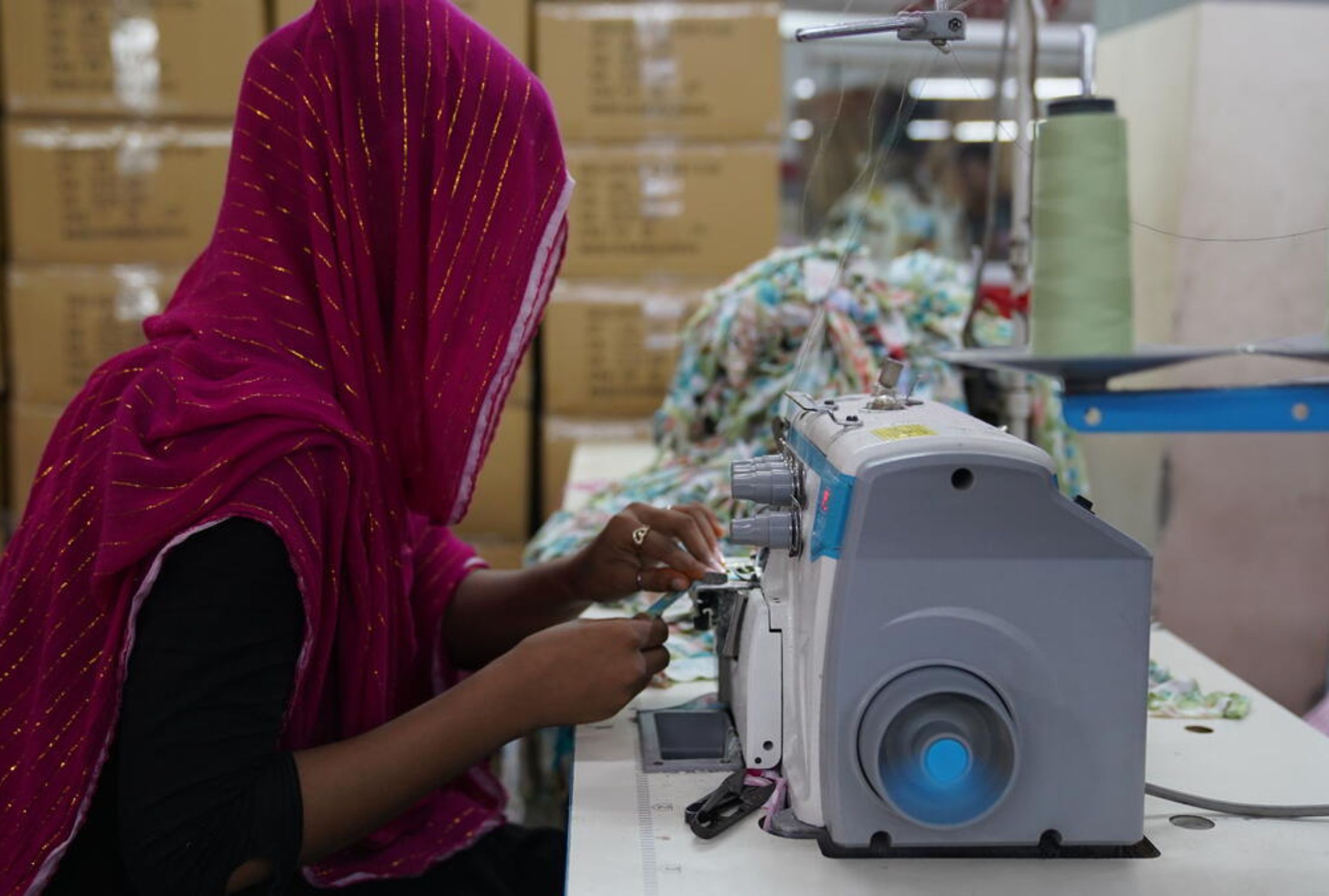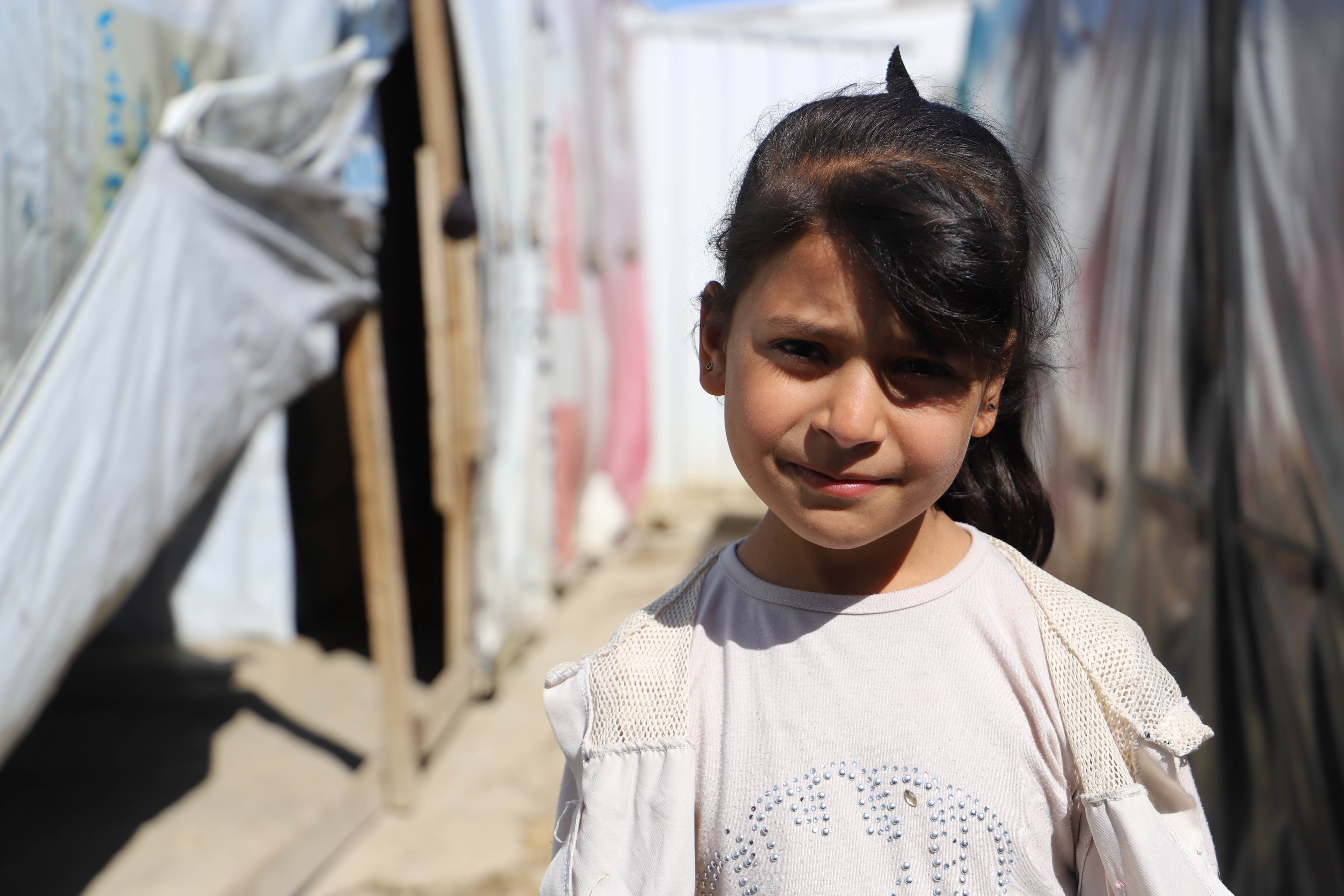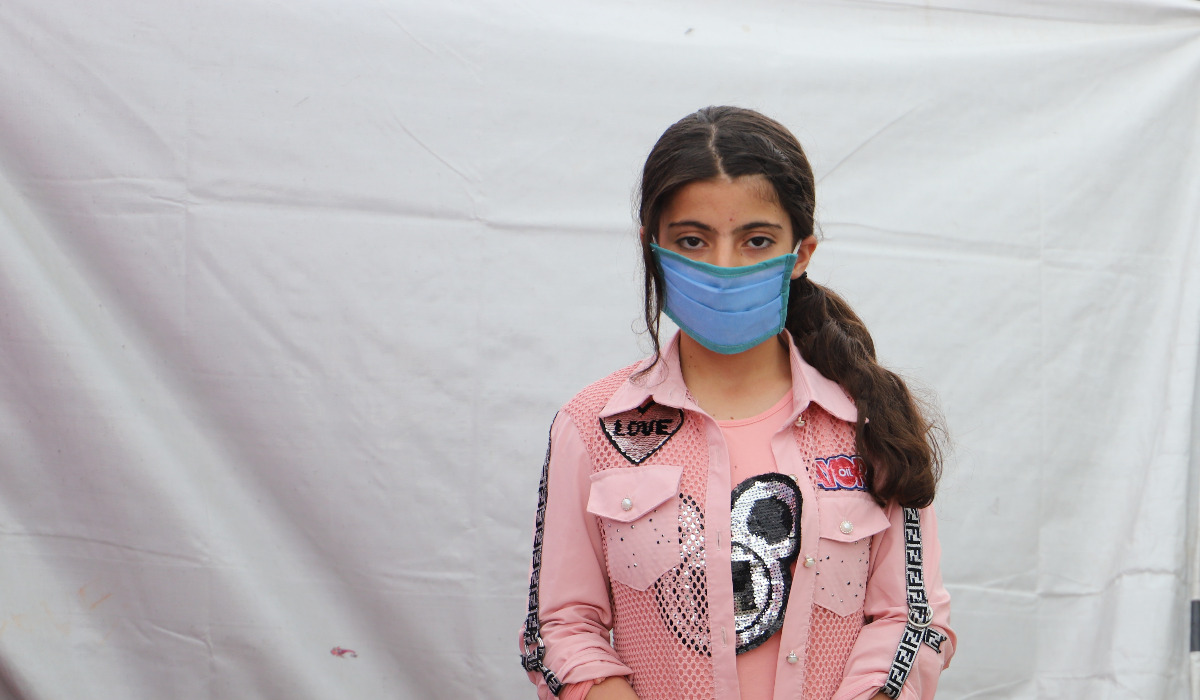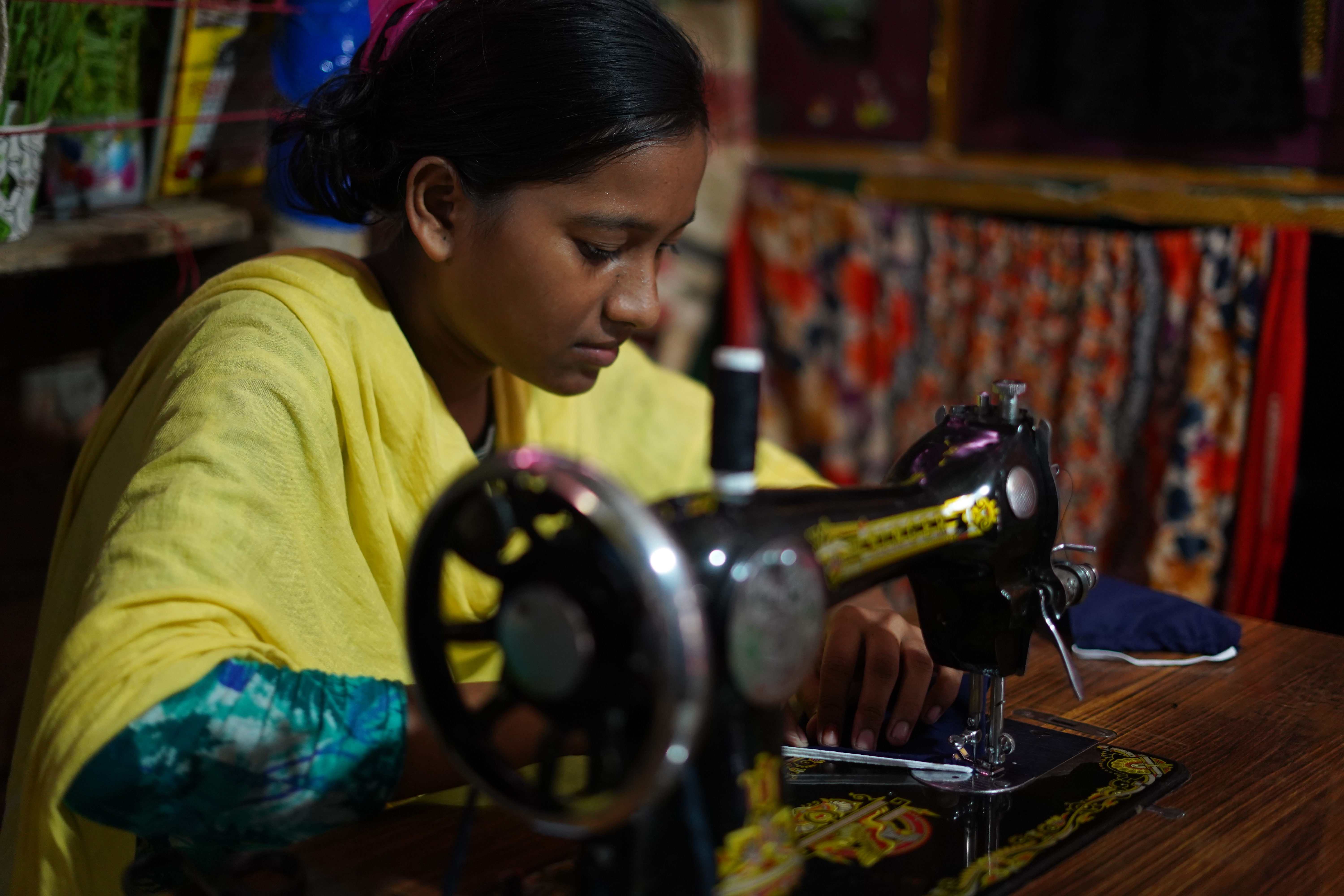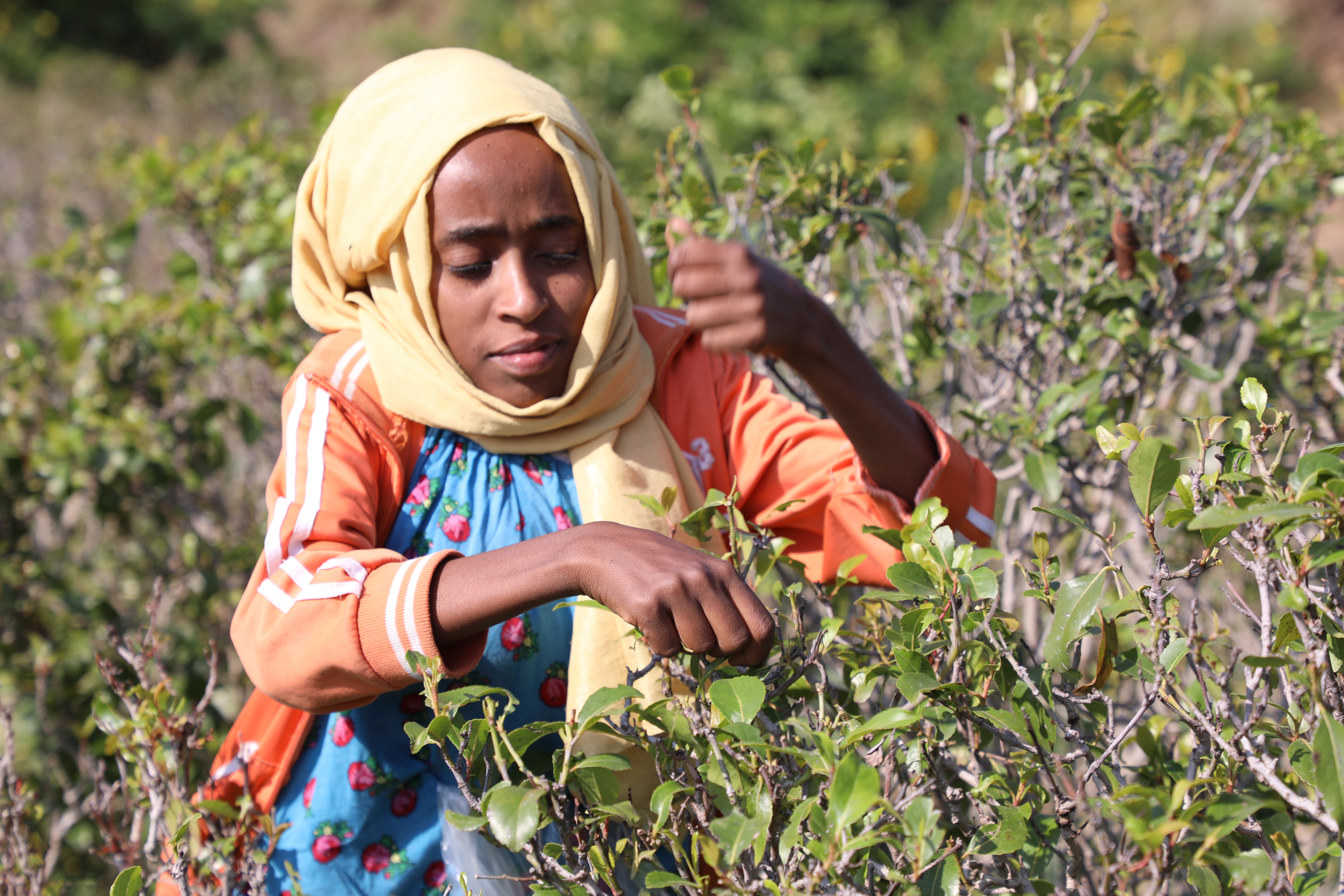
(Child) Labour of love
Partnership, threatened by UK aid cuts, tackles the worst forms of child labour.
World Vision-led programme tackles the worst forms of child labour
I work on a project designed to reduce the worst forms of child labour in three of the most difficult places in the world for children.
PACE – Partnership Against Child Exploitation – is a ground-breaking partnership between World Vision UK and others, including media and legal experts. PACE is also working to:
- bolster research on what works to reduce the worst forms of child labour
- help reintegrate children in the community who have been forced to work in armed groups, mines and work where they have been sexually exploited
- empower children to resist work that is damaging to their wellbeing. Helping them to find alternatives such as returning to school and vocational training
- help private sector organisations to achieve best practice in supply chain due diligence
- strengthen legal and reporting systems, so that abuses are reported, referrals made and justice achieved
- increase media focus on this underreported area.
Work or Labour?
In my role as a PACE programme officer, I come across challenges every single day. Challenges like:
- COVID-19 disrupting our work
- new staff who need help getting up to speed
- and the inevitable frustrations with internet connectivity issues!
These concerns are common for many others in their working day, but let’s get some perspective and ask ourselves:
- Is my work harmful to my physical health?
- Is my work detrimental to my mental wellbeing?
- Is my work detrimental to my development?
Data released this week by the International Labour Organization (ILO) and UNICEF shockingly shows us that gains made to reduce child labour have stalled for the first time in 20 years.
Estimates are that 160 million children are involved in child labour.
Even more alarming are the figures showing an increase of 6.5 million, to 79 million children involved in the worst forms of child labour. That’s work which is the most harmful to children physically, harmful to children’s mental health and harmful to their development.
Children like Merem and Yibeltal.

Merem's story
Merem is 16 years old. Her father is partially blind and paralysed, and her mother is a housewife with no means of income.
Merem earns about £9 a month collecting harmful leaves of ‘Khat’ plants, which the WHO classify as a ‘drug of abuse’ since they contain two stimulant drugs. She did this for six years to provide herself with school materials and supplement her family with food. Despite her commitment to continue school, the workload affected her school performance and stole her dream of completing her education. She says:
“The khat collecting business was tedious and challenging by nature. You have to collect the leaves of the plant in the stone-baking sun, walking from one plant to the other, for half the day. It makes you tired at the end of the day.
"Due to this, I was not able to attend school properly, study and do homework. Regrettably, I failed to pass to grade 10. I then quit school and engaged myself in full-time daily labour.”

Yibeltal's story
Yibeltal’s father is a subsistence farmer. His annual income is not enough to feed his family and send his children to school. He says:
“My yearly income is too meagre, let alone [enough] to provide writing materials and clothes for my children and send them to school. It could not sufficiently feed my family for more than half a year. I do daily labour and make charcoal ceaselessly to supplement my family.
Despite my struggle, my children are frequently exposed to food insecurity. Hence, instead of exposing my children to hunger, I preferred to rent out two of my children as cattle keepers.”
Yibeltal is 15 and has worked as a herder for the last three years. He dropped out of school at grade 3, but he would like to be a doctor.
His father rented him out as cattle herder in 2018 with £100 annual salary. “When I heard the rumour [I would be rented out] as a herder, I appealed to my father, crying, not to do so. However, he turned his back to my pleading. I refused to eat food all day long with a belief that my father will change his mind. Nothing has changed and I was rented out as cattle keeper,” he sadly recalls.
These are just two of 160 million children’s stories of child labour – it’s heartbreaking.
See what becomes of Yibeltal and Merem later in this blog.

Effects of the pandemic
This data was collected before knowing the impact of the coronavirus pandemic on poor families - so this figure will most likely increase as the true effects become known. In order to survive, many of those living in the poorest nations have no other option than to have their children work in hazardous, harmful, and exploitative activities. Activities like small-scale mining, forced recruitment into armed groups, and even sexual exploitation.
This labour is a double-edged sword as it also often denies children their education, play and rest time – what we in the UK may consider normal childhood rights.
On top of this, the recent cuts in UK government aid spending, have slashed PACE’s funding by 50%.
Due to these cuts the project is being closed in the Central African Republic, where World Vision has worked, with partners, for two and a half years – 18 months before its planned end date. This is despite the high levels of fragility, poverty and vulnerability which most communities live in.

And now, the good news
Where we can continue, PACE is working to offer families other choices.
Choices like returning to school to continue their education, by providing the materials they need but can't afford. By identifying and training children in vocational skills, which allows them to make their own living in safe and dignified work.
This year is a special year for the world as we work together against child labour.
Pledges have been made by workers associations, business networks, individuals and civil society organisations from all over the world to support the UN’s International Year for the Elimination of Child Labour.
This all supports the global Sustainable Development Goal 8.7, ‘Decent Work and Economic Growth’.
How can we end child labour?
If, like I did, you’re thinking that those who are making children work in hazardous, illegal, illicit and otherwise damaging work must simply be stopped, well the reality is more subtle, as I have learnt since working on the Partnership Against Child Exploitation programme.
- Children and their families and communities are not always aware of children’s rights under local, national and international laws.
- Children and their families may have no other options to survive than for children to earn some income. They live in extreme poverty, with no alternatives such as schools and vocational training opportunities.
- Legal systems, which should protect children and tackle perpetrators, are too weak to maintain the law. This is coupled with underreporting in the media so individuals and communities are not aware of the facts.
- Private sector organisations find it difficult to truly know what is happening in their supply chains and/or are unable to make changes to reduce the prevalence of child labour.
Reducing child labour is not about stopping children from increasing their skills and confidence.
It’s not about stopping children from learning to enter the world of adults.
It’s not about stopping children from earning money for themselves and their families.
PACE is working to prevent harm to the child’s physical health, mental wellbeing and development, which child labour causes.
The PACE Consortium has been working on all these themes in three of the most difficult places in the world for a child to grow up - Ethiopia, Central African Republic and Democratic Republic of Congo. We’re collecting robust data in these areas, which has few research studies, so we can help effectively reduce the worst forms of child labour.

What happened to Merem?
"Ignited... hope in my little heart"
Merem’s family has received some capital which they can use to start making a sustainable income.
Merem is now registered at school and will return soon.
“I lack words to explain how much I was delighted on hearing the good news of [being able to go] back to school. I told my friends and relatives this news and they all congratulated me. The news has ignited a sense of hope in my little heart. It seems that I am going to enjoy a bright future now. Thank you World Vision for this great job,” she happily explains.

What happened to Yibeltal?
"I will realise my dream"
Yibeltal has received school materials and is eagerly waiting for the opening of the school.
“I am thrilled to hear World Vision’s plan to help children in the worst of child labour like me. I am also pleased to hear that I will be back to school through World Vision support. I will study hard and become someone who can be useful for my country and realise my dream of being a medical doctor.”
Yibeltal’s father is also pleased to see his child and himself able to take part in the programme. He says, “I am delighted to see my child back to school. I will try to work hard with the startup capital I will be given and feed my children properly and send them to school.”
Hearing these stories helps me to cast off the everyday challenges of my job and redouble my efforts to work on this exciting PACE project which is helping many children like Merem and Yibeltal. It is truly a labour of love for me.
Let this year – 2021 – be the year the world is behind children like Merem and Yibeltal; let’s work together to eliminate harmful child labour once and for all.
*This is the position of World Vision UK – and does not necessarily represent the thoughts of all PACE consortium members

